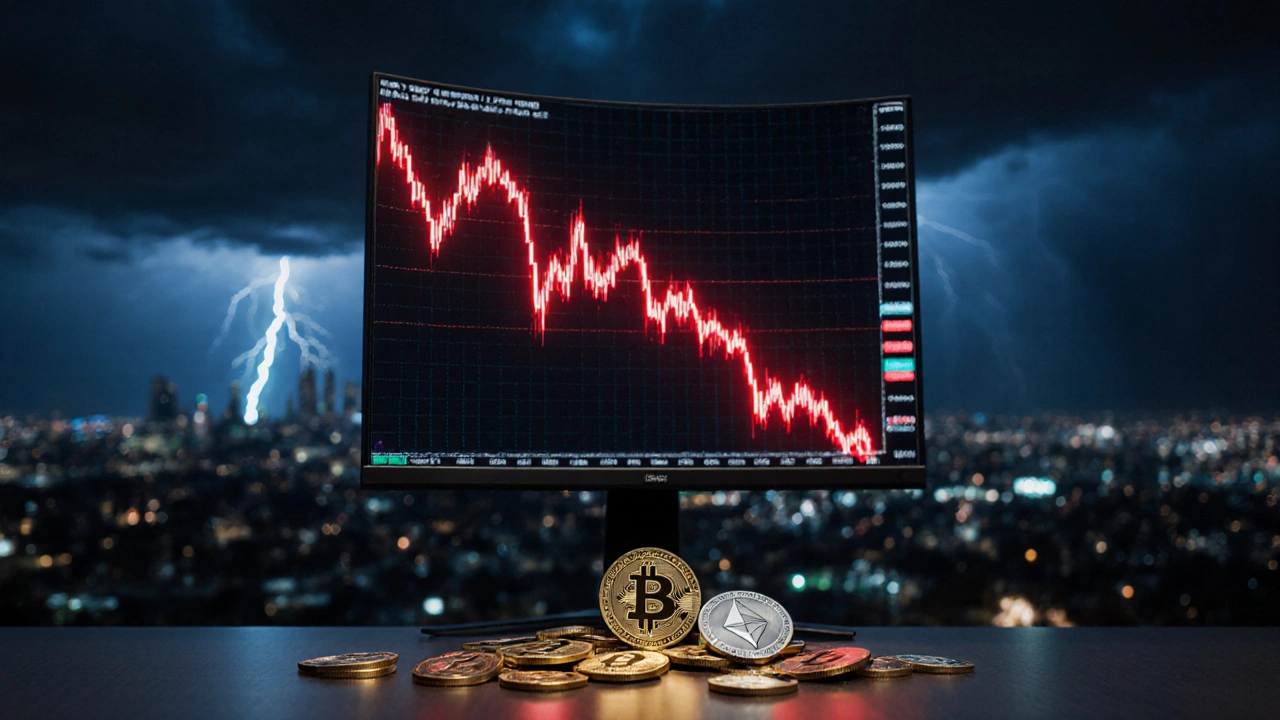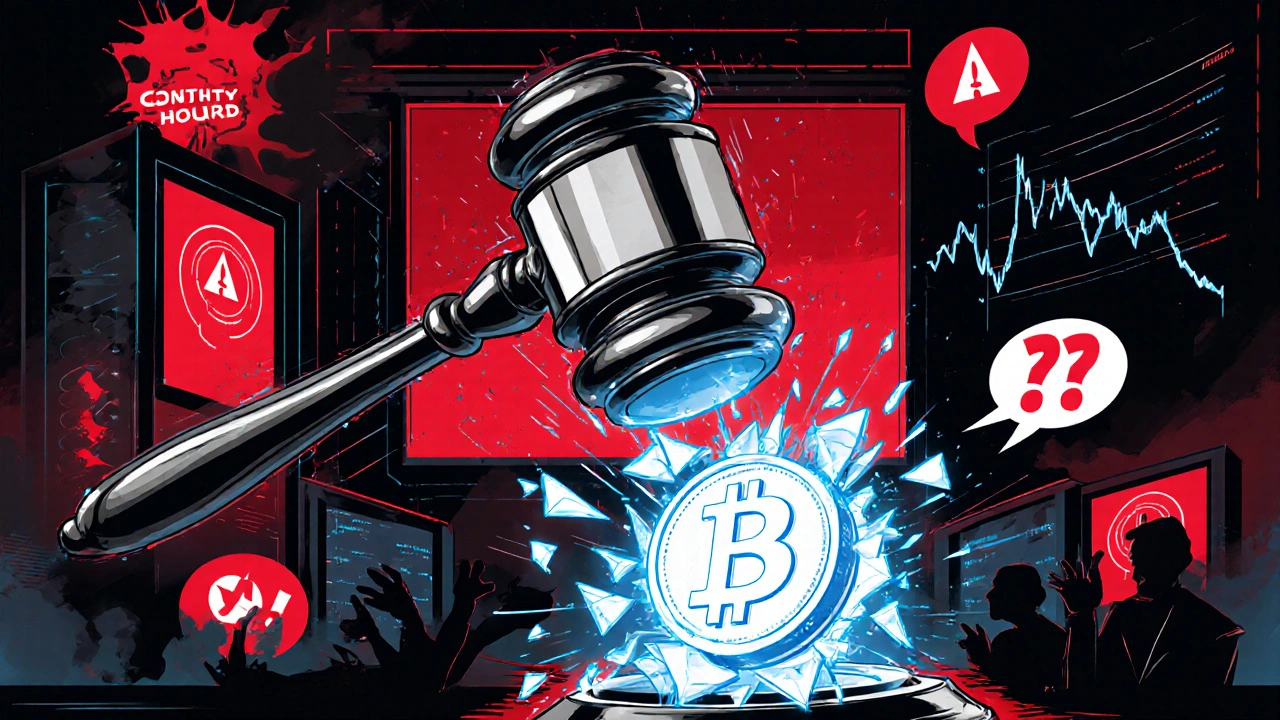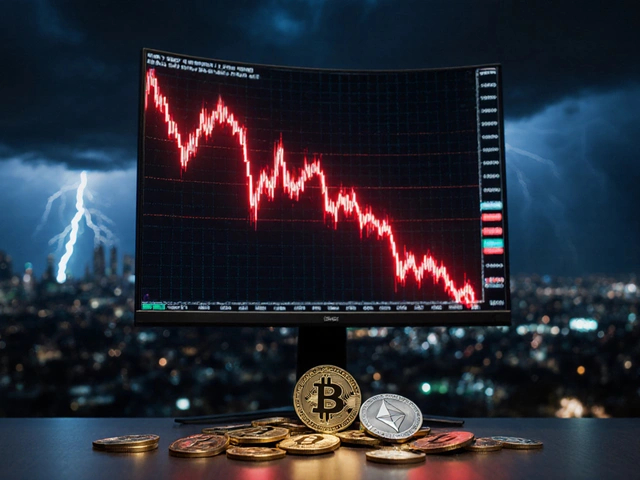5
What Causes a Crypto Market Crash? - Key Triggers Explained

When a crypto market crash is a rapid, deep decline in the overall value of digital assets, often wiping out billions in market cap within days you feel it across wallets, news feeds, and even everyday conversations. Pinpointing why it happens isn’t just academic - it helps you avoid panic selling, spot early warning signs, and build a more resilient portfolio.
Key Takeaways
- Crashes stem from a mix of macro‑economic shifts, regulatory shocks, liquidity squeezes, technical failures, and crowd psychology.
- Major events like regulatory actions government measures such as bans, licensing requirements, or tax changes that directly affect crypto trading can trigger instant sell‑offs.
- Liquidity crunches and massive whale movements large holders moving gigabytes of tokens in a short period amplify price drops.
- Monitoring on‑chain metrics, exchange health, and sentiment indexes provides early clues before a full‑blown crash.
- Diversifying, using stop‑loss orders, and keeping cash reserves are proven ways to protect yourself.
Below we break down each driver, illustrate real‑world examples, and give you concrete steps to stay ahead of the next tumble.
1. Macro‑Economic Pressures
The broader financial environment exerts a powerful pull on crypto prices. When interest rates the cost of borrowing set by central banks, especially the US Federal Reserve rise, investors often shift money from riskier assets like cryptocurrencies to safer bonds or cash. The 2022‑2023 Fed hikes, for example, coincided with a 70% drop in Bitcoin’s market cap.
Inflation fears also matter. High inflation erodes purchasing power, prompting a flight to perceived hedges. While some view Bitcoin as ‘digital gold’, a sudden spike in real‑world inflation can cause panic selling if investors doubt its store‑of‑value claim.
Geopolitical shocks - wars, sanctions, or sudden currency collapses - can force capital outflows, and crypto, being a global asset, feels the tremor. The 2024 Russian ruble crisis saw several stablecoins dip sharply as sanctions limited cross‑border transfers.
2. Regulatory Shockwaves
Regulators wield a scalpel that can cut through market optimism in an instant. A regulatory ban a government prohibition on cryptocurrency trading or usage in a major economy instantly removes liquidity and raises compliance costs.
Take the 2023 China crackdown: the People's Bank declared all crypto transactions illegal, leading to a 30% market dip within 48 hours. Similarly, the US SEC’s 2024 lawsuit against a major exchange over unregistered securities created a “regulation‑uncertainty” premium, pulling down prices across the board.
Licensing requirements can also choke smaller exchanges, forcing users to migrate to larger platforms, which then experience sudden order‑book imbalances. When India’s Ministry announced a licensing framework in early 2025, several unlicensed exchanges shut down, draining over $5billion in daily volume.
3. Market Structure & Liquidity Issues
Liquidity-the ease of buying or selling without moving the price-is the hidden backbone of any market. Crypto markets run on thin order books compared to traditional equities, making them vulnerable.
A liquidity crunch a sudden shortage of buy orders that forces sellers to accept lower prices can happen when major exchanges experience outages or when large holders withdraw assets to cold storage.
For instance, the 2024 Binance outage during a high‑frequency trading surge caused a 12% dip in Bitcoin within minutes, as traders scrambled to other platforms with less depth.
Whale movements add another layer. When a single entity off‑loads $200million worth of Ethereum, the market often interprets it as a signal of negative sentiment, prompting a cascade of panic sells.

4. Technical & Security Failures
Unlike regulated banks, crypto relies heavily on code. Bugs, hacks, and protocol failures can wipe out confidence overnight.
Consider the 2022 exchange hack an unauthorized intrusion that steals user funds from a trading platform of a major exchange, resulting in a $600million loss and a 25% market drop across the top ten tokens.
Protocol-level flaws also matter. The 2023 Ethereum “Merge” upgrade faced unexpected gas‑price spikes, leading to temporary transaction backlogs and a short‑term dip in ETH price.
Stablecoins, touted as safe havens, have their own risk. When a stablecoin’s reserve assets are found to be insufficient-like the 2024 Terra‑UST incident-trust evaporates and the entire crypto market tumbles.
5. Behavioral Triggers & Sentiment Swings
Human psychology is perhaps the most unpredictable driver. Fear, Uncertainty, and Doubt (FUD negative news or rumors that cause panic selling) spreads faster than any technical indicator.
Social media platforms amplify FUD. A single tweet from a high‑profile investor alleging market manipulation can trigger a wave of sell orders. In May 2025, a tweet from a prominent billionaire questioning Bitcoin’s energy usage coincided with a 15% price plunge within an hour.
Conversely, FOMO the fear of missing out, driving irrational buying that inflates prices can set the stage for a sharper correction once reality catches up.
6. Spotting Early Warning Signs - A Practical Checklist
- Sharp rise in leverage trading borrowing to amplify crypto positions on major exchanges.
- Increasing concentration of assets on a few wallets (whale activity).
- Growing number of regulatory filings or official statements targeting crypto.
- Sudden spikes in on‑chain transaction fees indicating network congestion.
- Rise in negative sentiment on Twitter, Reddit, and Telegram (track via sentiment APIs).
- Liquidity drop on order books - check depth charts for widening spreads.

7. Protecting Your Portfolio - Pro Tips
- Diversify beyond Bitcoin and Ethereum. Include assets from different categories such as DeFi tokens, infrastructure projects, and even non‑crypto commodities.
- Set stop‑loss orders at key support levels (e.g., 20% below recent swing highs).
- Keep a cash reserve equal to at least one month’s living expenses to avoid forced selling.
- Use hardware wallets for long‑term holdings to reduce exposure to exchange hacks.
- Stay updated with reputable news sources and regulatory bulletins; subscribe to alerts from official agencies.
- Consider low‑volatility stablecoins as a temporary parking spot during high‑stress periods.
Comparison of Main Crash Drivers
| Trigger | Typical Immediate Impact | Typical Duration | Historical Example |
|---|---|---|---|
| Macro‑economic (rate hikes, inflation) | Broad‑market sell‑off, volume up | Weeks to months | 2022 Fed rate hikes |
| Regulatory bans or lawsuits | Sharp price drop, exchange delistings | Days to weeks | 2023 China crackdown |
| Liquidity crunch / exchange outage | Sudden spikes in spread, rapid price fall | Hours to a few days | 2024 Binance outage |
| Security breach / hack | Loss of funds, confidence dip | Days to weeks | 2022 Exchange hack ( $600M ) |
| FUD / sentiment swing | Immediate sell pressure, media buzz | Hours to days | 2025 Billionaire tweet on energy use |
Frequently Asked Questions
Why does Bitcoin often lead a crypto crash?
Bitcoin holds the largest market cap, so its price movement heavily influences the overall market sentiment. When Bitcoin drops sharply, margin calls and liquidations on leveraged positions ripple through altcoins, amplifying the crash.
Can stablecoins prevent a crash?
Stablecoins offer a temporary haven, but if the stablecoin itself loses peg credibility (as with Terra‑UST), they can actually trigger panic. Use well‑audited stablecoins and keep a portion in fiat for true safety.
How important is on‑chain data for crash prediction?
On‑chain metrics like net‑flow of funds to exchanges, active addresses, and hash‑rate changes provide early signals. A sudden spike in coins moving to exchanges often precedes a sell‑off.
Do market cycles guarantee a crash every few years?
Historically, crypto has shown 3‑ to 4‑year cycles of boom followed by correction. While patterns help set expectations, each crash has unique triggers beyond just timing.
Is leveraging risky during volatile periods?
Yes. High leverage magnifies both gains and losses. During a crash, liquidations happen fast, wiping out positions and feeding the downward spiral.









